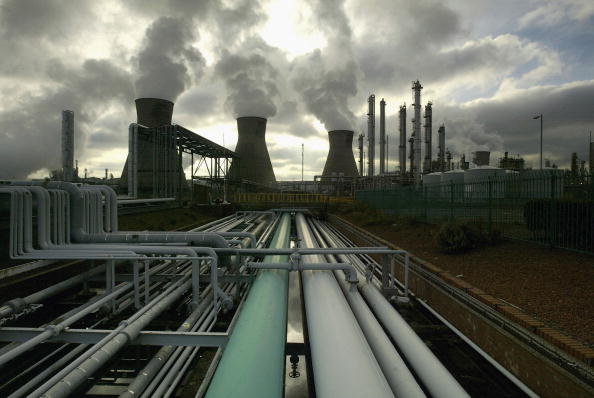India, China and the Global Pursuit of Energy: Coopetition and competition
By Indrajit Basu
India and China, the most aggressive shoppers for oil and gas assets in the world, and normally archrivals in the race for overseas oilfields, have finally come together to pursue their energy security in the global arena.
China National Petroleum Corporation (CNPC) and India’s Oil and Natural Gas Corporation (ONGC), the two largest oil companies in the respective countries, announced on December 20 that they had jointly won a bid to acquire 37% of Petro-Canada’s stake in
Syrian oilfields for US$573 million. ONGC and CNPC, both state-owned, will have equal stakes in the al-Furat oil and gas fields.
“We are very excited about this breakthrough of joint acquisitions with CNPC,” said Subir Raha, the chairman of ONGC, who maintains a very high profile in not only the country’s oil and gas industry but the globally as well.
“CNPC and ONGC have been working together as joint operators in Sudan for the last three years. While we have worked together as joint operators and have gained confidence in each other’s technical capabilities, we had never joined hands to own a foreign property jointly. This [will] be the first time, then, that an Indian company [will] acquire an oil property along with a Chinese company.”
Indeed, as experts have said, although in monetary terms a $573-million deal may not be very significant, this one is significant because ONGC’s overseas arm ONGC Videsh Ltd (OVL) had competed with Chinese firms for oil properties in Central Asia, West Africa and Latin America in the recent past.
In addition, in the past 12 months, Chinese oil companies have been consistently outmaneuvering India in just about every oil property the two countries chased. In their bid for oil security, the two countries, allege oil industry analysts, have also contributed immensely to the record high oil prices this year.
Take the following instances. In early August, CNPC and an ONGC consortium competed directly in an attempted buyout of the Canadian firm PetroKazakhstan, which had most of its operations in Kazakhstan, but CNPC grabbed the deal at the last moment by topping the Indian consortium’s bid.
And last October, despite an agreement between Shell and OVL that entailed offloading Shell’s 50% stake in Angola Block 18 to OVL, India was stymied because Sonangol, Angola’s national oil company, which is the sole concessionaire for exploration and production of oil in Angola, wanted the property to go to Chinese oil companies.
Currently, too, the two are also pitched against each other for Encana’s Ecuador assets, which in mid-September almost went to Andes Petroleum Corporation, a joint venture of Chinese petroleum companies, because India withdrew from the bid. However, subsequently it was reported that ONGC may be considering bidding for it again.
But besides the mere fact that the two countries have joined hands for feeding their oil-hungry economies, the current deal is important for a few other reasons.
For one, said experts, the al-Surat fields are already producing, so the partners will gain instant access to 60,000 barrels of oil per day without having to invest in exploration immediately. And secondly, “it is an important milestone because we have been working on this for quite some time, and instead of competing wherever possible, this win opens up the possibility of the two countries working together whenever feasible,” said S C Tripathi, the Indian petroleum secretary.
The two countries’ pursuit of what India’s Petroleum Minister Mani Shankar Iyer calls “coopetition instead of competition” in securing their energy needs started in April this year, when during his visit to India Chinese premier Wen Jiabao said that energy cooperation should be an integral part of the bilateral dialogue between the two countries.
Picking up on that cue, an Indian delegation from oil companies visited China subsequently to discuss energy ventures. The two countries also set the global oil industry’s tongues wagging when Indian and Chinese oil companies met up at the World Petroleum Congress in Johannesburg in South Africa in October. And last month, representatives from the oil industries of the two countries met in New Delhi for further roundtable ministerial talks.
Meanwhile, it appears that the stage is set for the two countries to make more joint oil bids. According to a report in the Economic Times, Indian oil companies, including downstream marketing companies like the Indian Oil Corporation, BPCL, OVL and Prize Petroleum, are set to ink agreements with China’s Sinopec, CNOOC and CNPC, for collaboration in the exploration, petroleum and gas sectors.
India and China are also expected to sign a bilateral hydrocarbon cooperation deal in January 2006, when Iyer is slated to visit China. It will work as an umbrella agreement enabling joint ventures between companies in different sectors. It has also been reported that three Chinese oil companies have shown interest in tying up with Indian oil companies in their global quest for energy.
But this cooperation could be bad news for Western oil companies. Analysts said that if the two countries teamed up on a regular basis, it should worry Western oil majors. “The Indian and Chinese companies are willing to pay a higher premium for assets. The pressure is certainly on the majors,” said Praveen Martis, an analyst at consultancy Wood Mackenzie, in a Reuters report.
Indrajit Basu is a Kolkata-based equity-analyst-turned-journalist. This article appeared in Asia Times on December 22, 2005. It is published at Japan Focus on December 25, 2005.






